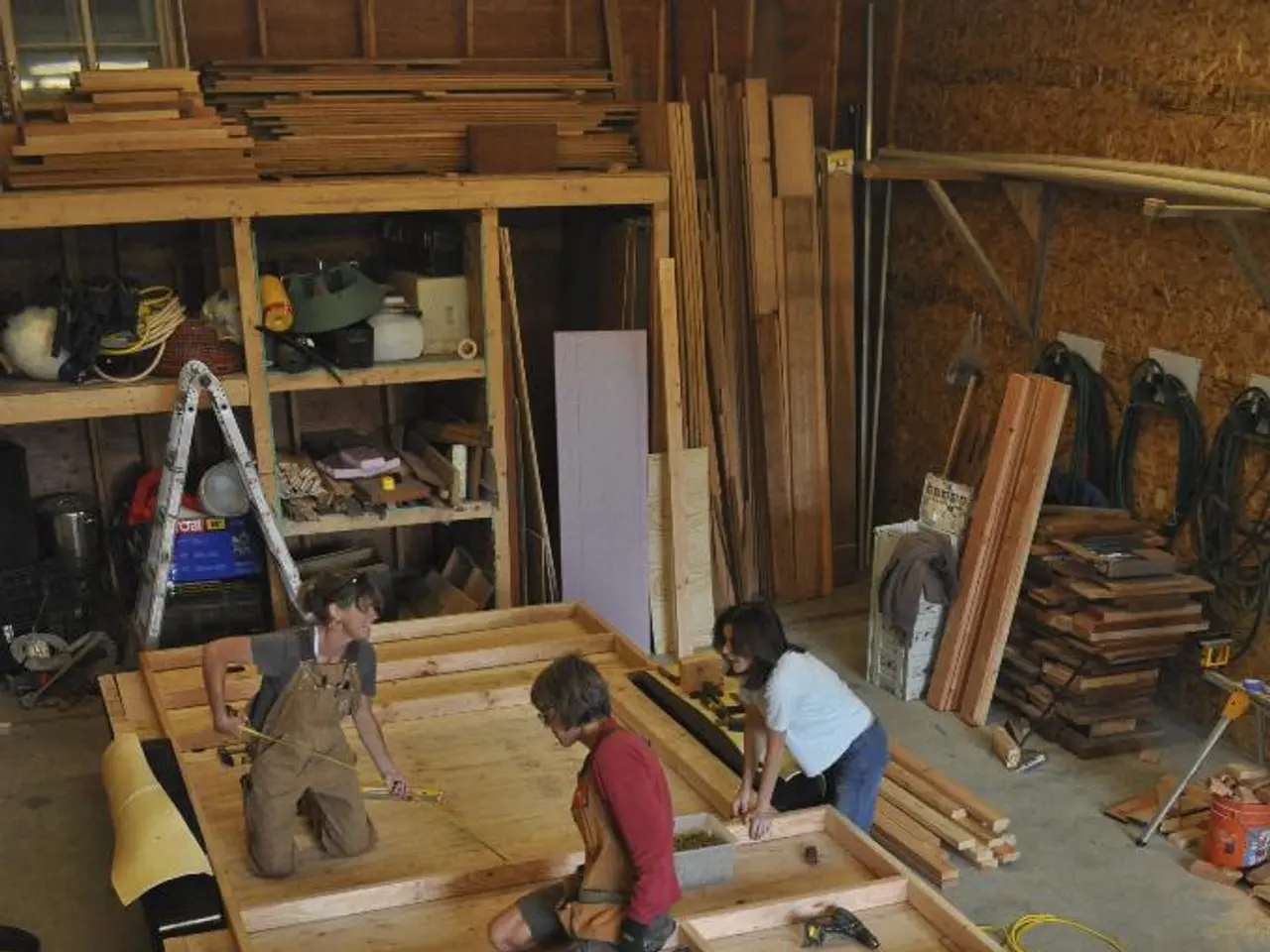Advantages of Virtual Reality in Construction Industry
Virtual Reality (VR) technology is set to transform the construction industry, offering a more immersive and interactive experience for workers and professionals. This innovation promises to lead to a more efficient and cost-effective construction process.
Enhanced Design Visualization
One of the key benefits of VR technology in construction is its ability to provide enhanced design visualization. Construction teams and stakeholders can enter full-scale, interactive virtual environments representing the project, surpassing traditional blueprints. This immersive visualization allows users to explore and test design elements in real time, identifying potential design flaws or spatial issues before ground is broken [1].
Improved Stakeholder Communication
VR serves as a collaborative platform where architects, engineers, project managers, and clients can meet virtually to review and align on project details. This real-time interaction helps unify understanding, reduces miscommunication, and streamlines decision-making across multidisciplinary teams [1][2].
Reduced Costs and Errors During Pre-Construction
By simulating and testing concepts virtually, VR allows for resolving structural conflicts and refining strategies early, which prevents expensive mid-project changes and accelerates project delivery [1].
Integration with BIM and Advanced Technologies
VR often integrates with Building Information Modeling (BIM) to overlay detailed data about the building’s components, schedules, and costs. This integration supports holistic project management and enables AI-driven clash detection and resolution, further reducing errors and improving workflow efficiency [2].
Real-time Monitoring and Digital Twins
VR environments linked with digital twins provide real-time comparison between the digital model and actual construction progress, helping maintain accuracy and enabling proactive management of deviations [3].
Training and Safety
VR is also used for safe, immersive training of construction workers by simulating site conditions and procedures, improving preparedness and reducing onsite accidents [5].
Overcoming Challenges
While VR technology offers numerous benefits, implementing it in construction comes with its own set of challenges. Ensuring compatibility with existing software and hardware systems is a significant hurdle. Integrating VR software solutions into construction workflows can help streamline processes and improve collaboration between team members. Popular VR software solutions used in the construction industry include Unity, SketchUp, and Revit [4].
Selecting the Right Hardware
Selecting the right VR hardware is essential for VR implementation in construction projects. Popular VR headsets used in the construction industry include the Oculus Quest 2, HTC Vive, and Microsoft HoloLens [4].
Staying Ahead of the Curve
As with any technological advancement, it's crucial to stay up-to-date on the latest trends and best practices in VR implementation to ensure a successful and sustainable future for the construction industry. This includes considering the potential impact of VR on worker safety, as the technology can be disorienting and may require workers to wear additional equipment [6].
Competitive Edge
VR technology can help companies stay competitive by providing a more immersive and interactive experience for stakeholders, ultimately leading to a more efficient and cost-effective construction process [7].
In conclusion, VR technology is set to revolutionize the construction industry by bringing complex designs to life early, fostering better communication and collaboration, enabling proactive problem-solving, and aligning all stakeholders on project vision to boost efficiency and reduce waste [1][2][3][5].
[1] "Virtual Reality in Construction: A Review of Applications, Challenges, and Opportunities." Journal of Construction Engineering and Management. 2020.
[2] "Virtual and Augmented Reality in Construction: A Systematic Review." Building and Environment. 2019.
[3] "Virtual Reality and Building Information Modeling: A Systematic Review." Journal of Building Engineering. 2020.
[4] "Virtual Reality in Construction: A Comprehensive Review." Journal of Architectural Engineering. 2020.
[5] "Virtual Reality in Construction Education: A Review of the Current State and Future Directions." Journal of Construction Education and Research. 2020.
[5] "Virtual Reality in Construction Safety Training: A Systematic Review." Safety Science. 2020.
[6] "Virtual Reality in Construction Safety: A Review of Applications, Challenges, and Opportunities." Journal of Safety Research. 2020.
[7] "Virtual Reality in Construction: A Review of the Impact on Efficiency and Cost-Effectiveness." Journal of Construction Project Management. 2020.
Technology like VR offers improved design visualization, allowing construction teams to explore and test designs in immersive virtual environments [1]. This collaboration between architects, engineers, and stakeholders can reduce miscommunication and streamline decision-making across multidisciplinary teams, leading to a more efficient and cost-effective construction process [1][2].




